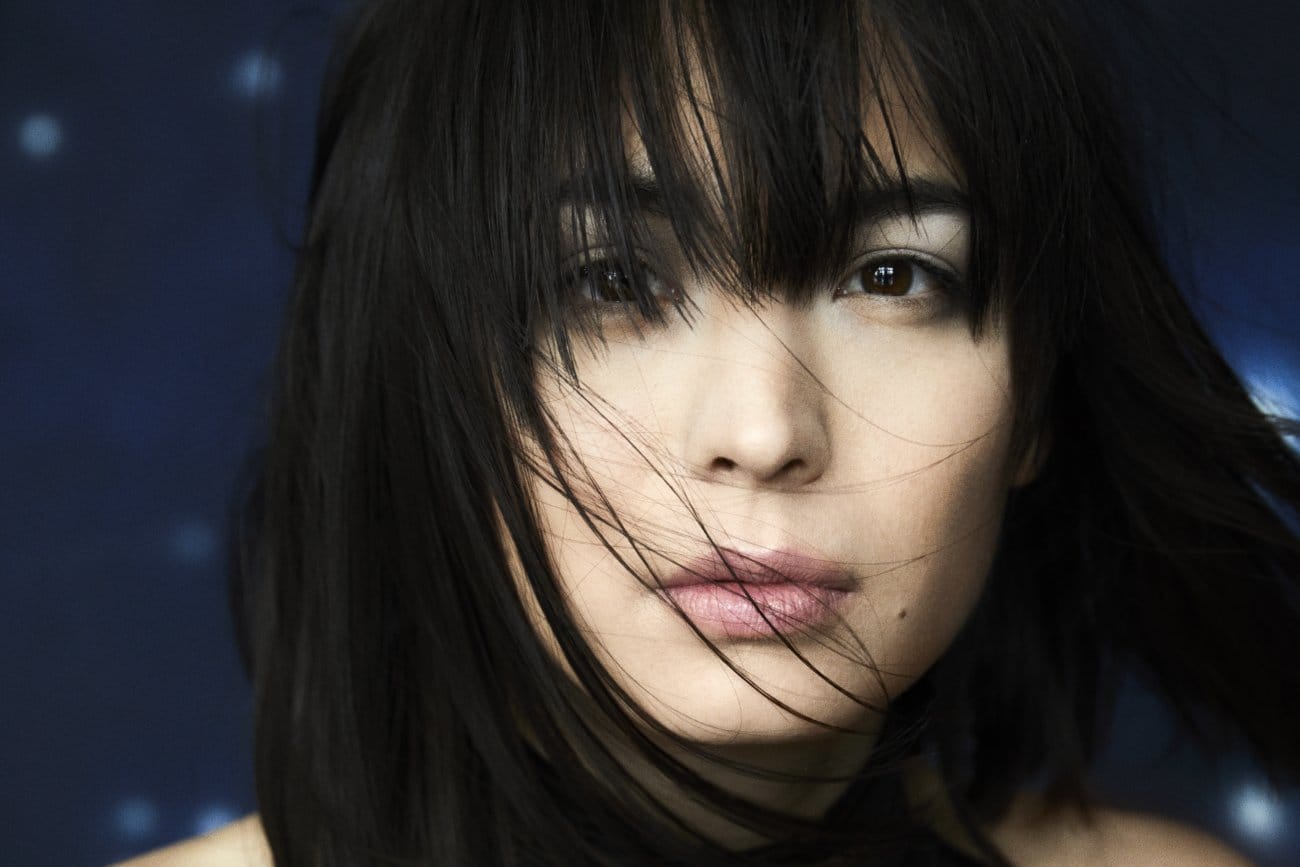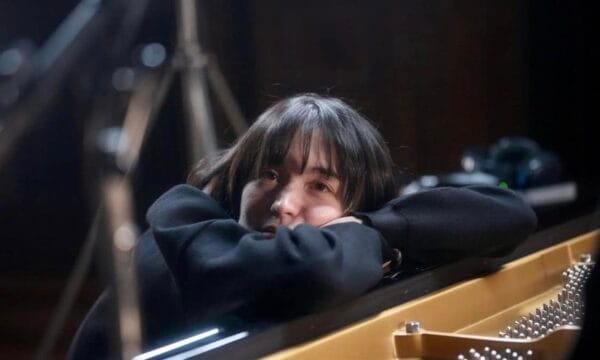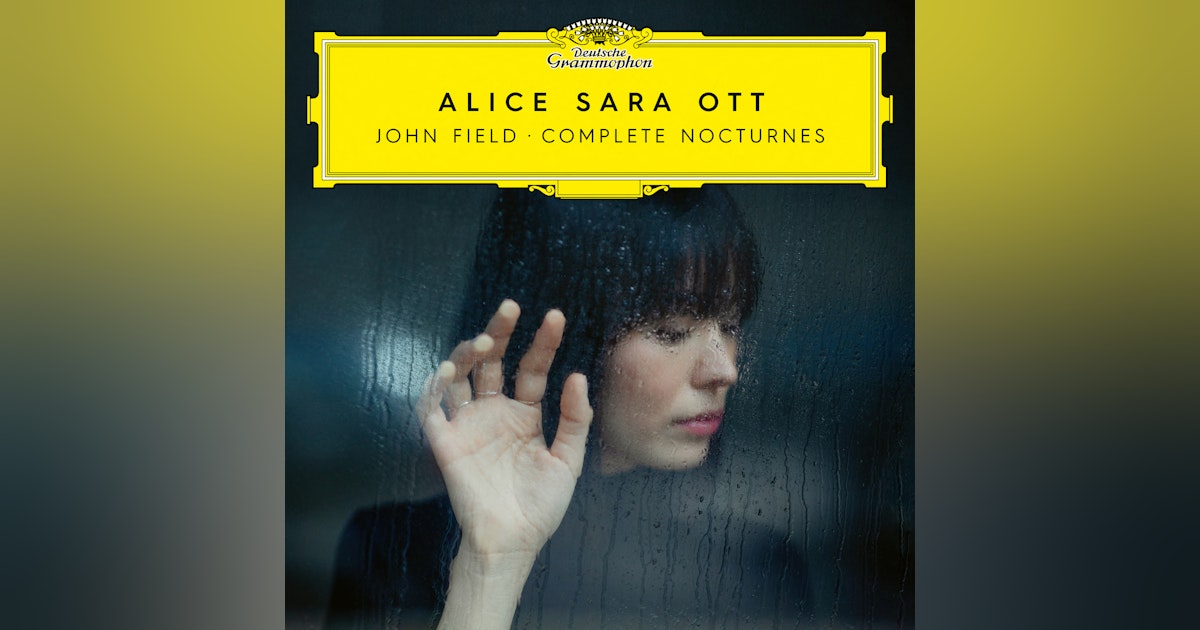Field, Beethoven and Alice Sara Ott: her new release, and Southbank recital

John Field – Nocturne No.17 in C, H 61
Beethoven – Piano Sonata in G minor, Op.49/1
John Field – Nocturnes: No.1 in E-flat, H 24; No.2 in C minor, H 25; No.4 in A, H 36; No.10 in E, H 54
Beethoven – Piano Sonata in E, Op.109
John Field – Nocturnes: No.14 in G, H 58; No.16 in C, H 60; No.9 in E minor, H 46; No.12 in E, H 13
Beethoven – Piano Sonta in C sharp minor, Op.27/2, ‘Moonlight’John Field – Nocturne No.17 in C, H 61
Beethoven – Piano Sonata in G minor, Op.49/1
John Field – Nocturnes: No.1 in E-flat, H 24; No.2 in C minor, H 25; No.4 in A, H 36; No.10 in E, H 54
Beethoven – Piano Sonata in E, Op.109
John Field – Nocturnes: No.14 in G, H 58; No.16 in C, H 60; No.9 in E minor, H 46; No.12 in E, H 13
Beethoven – Piano Sonta in C sharp minor, Op.27/2, ‘Moonlight’
Beginning her latest tour on the date of the release of her new recording of John Field Nocturnes on DG, Alice Sara Ott delivered a fascinating programme, not least because she chose Beethoven, not Chopin, as Field’s bedfellow.
So where is the emphasis in the programming? I came for the Field – I imagine I might not have been alone – and yet the Southbank’s own publicity refers to three Beethoven piano sonatas ‘interspersed’ with Field Nocturnes. There are three Beethoven sonatas here, true, but one is slight (Op.49/1). The effect is actually two end-weighted halves: both end with substantive Beethoven (Ops. 109 and 27/2). The Field therefore creates a ‘field’ of its own, with Op.49/1 as something of an interlude.

In her notes to her new DG release, Ott states that sometimes it is difficult to ‘place’ Field Nocturnes. Some align to Mozartian simplicity, and one of those is certainly her starting point for this concert, the Nocturne No.17 in C. It has a theme of great charm which is quirkily interrupted. Perhaps Ott’s agogics can seem exaggerated, but the charm remains.
Here's the DG recording:
Launching into Beethoven’s Op.49/1, Ott gave an invigorating account of the first movement (nice, strong octaves, too) before offering a finale of much sprightliness. This second movement is a Rondo marked Allegro, and as the first fast music came as a refreshing treat. Ott’s voice-leading is intelligent, her bassline clean. There is much to enjoy here; but it was the return to Field that captured Ott’s enthusiasm the most, that offered a real sense of discovery.Ott has impressed in Beethoven on disc before, as this post of he First Piano Concerto with some interesting couplings shows.
The Nocturne No.1 in E-flat is much more what one might expect from a Nocturne, with Ott enjoying Field’s inner workings. The C minor Nocturne that follows was fascinating, full of expectation as well as melancholy, given all the space it needs. Here's the recording of No. 1 and an “official music video” of No. 2:
With its flights of fantasy and many roulades, No.4 in A moves closest to Chopin’s work with the form: Ott’s playing was beautifully even and full of imaginative twists, especially responsive to the music’s darkenings. At nearly five minutes, this has space to breathe; Ott’s performance was magical.
The final Nocturne of this group, No.10, H 54, is sometimes known as ‘Grand Pastorale in E major’ and is florid (using the extreme treble of the piano), characterised by the increasing complexity of decoration used. A miniature tone poem, Field’s piece is wonderful; as was Ott’s performance, full of colour and with a real sense of narration, of storytelling.
Ending with Beethoven Op.109 did take us to a different world, however. Ott’s Beethoven is something of a known quantity, and that recording of Beethoven’s First Concerto (again on DG) is imaginative and lively. This sonata launches the final great trio of sonatas and requires an interpreter of the utmost experience. There is no doubt she found the crystalline beauty of the first movement, and the second arrived, rightly, with an arresting dynamic gesture. That finale did unfold well, with a real sense of blossoming. I wonder if Ott could invite us to still more profound places of peace, places transcendent from shared reality? Technically, this was more than excellent, staccato so perfectly even, chords beautifully weighted. It was just the recurrence of the opening was not quite as heartbreakingly beautiful as it can be.

The second half pitted four Nocturnes against the ‘Moonlight’ (a piece she has recorded, also for DG). The first Nocturne was No.14 in G, a Lento of glistening beauty, a treble melody singing against arpeggiated left hand. Again, filigree was lovely, but it was the way Ott captured the inevitability and sweet sorrow of the piece’s close that was so touching.
C major for Field seems to mean sunlight emerging rather than sunlight arrived. There was almost an operatic aspect to Ott’s lines here. The move to E minor was poignant indeed. In her booklet notes to the release she speaks of feeling as if she had known this music before, even though they were first hearings. I felt the same about the E minor (which incidentally holds a nice link to the first movement of the ‘Moonlight’). Ott gave it a captivating performance, anyway; and what a great idea to finish the Field portion with the light E major, H 13, playful in the extreme (and including a tolling bell!) and yet with a markedly dramatic contrasting section. Quite a daring piece, formally, and well realised by Ott. In the DG recording, Ott includes an actual bell. Here's the E major, in other “Official music Video”:
Finally, that ‘Moonlight’, the first movement beautifully judged (and heard in a slightly different light after the Czerny ‘pre-echo’). Ott was unafraid to make the Allegretto playful and dance-like before the final Presto agitato, accents perhaps less effective than in her recording, but with superb clarity of articulation and laudably careful with the sustaining pedal. You can find Classical Explorer's post on Ott's DG recording here.
One encore, Arvo Pärt’s Für Alina (a piece Ott has also put on disc/streaming).
Let's end with a Nocturne from the DG set that weren't in the QEH programme: the lovely, melancholic D minor, H 59, marked “Lento plaintivo” and labelled, with justification, “Song without Words”. Ott plays these Nocturnes as if she is discovering them in real time, with.real sense of wonder, and couples that with who is obviously depressed study. Field's surprising little twists are positively relished:
A beautiful recital, and an equally beautiful release. Ott is.pianist who really realises where her strengths lie, and chooses repertoire accordingly. She impresses here, she impresses in Beethoven, and in Grieg. And, for the matter, in Pärt:
The CD is available from Amazon here, LP here. Streaming below.


